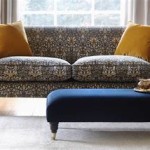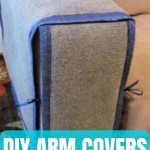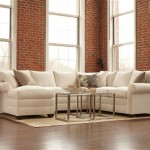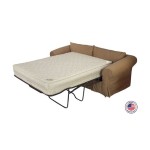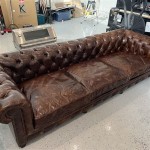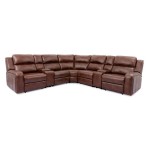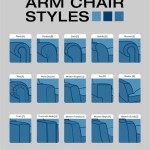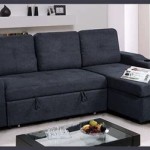Condo Leather Sofa: A Comprehensive Guide to Style and Practicality
Selecting furniture for a condominium, particularly a sofa, requires careful consideration of space, style, and durability. A condo leather sofa presents a compelling option, offering a blend of sophistication, comfort, and longevity that can enhance the overall aesthetic and functionality of a smaller living space. However, navigating the myriad of styles, materials, and features requires a thorough understanding of the available choices. This article aims to provide a comprehensive guide to selecting the ideal condo leather sofa, examining its advantages, addressing potential drawbacks, and offering advice on maximizing its lifespan.
Understanding the Appeal of Leather Sofas in Condos
Leather sofas hold a perennial appeal, rooted in their timeless elegance and inherent qualities. The material itself exudes a sense of luxury and sophistication, instantly elevating the ambiance of any room. Beyond aesthetics, leather offers practical benefits, including durability, ease of maintenance, and a natural resistance to wear and tear, making it a suitable choice for high-traffic areas within a condo. In the context of limited condo space, the clean lines and structured designs often associated with leather sofas can contribute to a sense of order and spaciousness.
The inherent durability of leather translates to a long lifespan, making it a cost-effective investment in the long run. While the initial cost may be higher than fabric alternatives, a well-maintained leather sofa can withstand years of use without showing significant signs of wear. This longevity is particularly valuable in condos, where residents may be less inclined to replace furniture frequently due to space constraints and relocation considerations.
Furthermore, leather is relatively easy to clean and maintain. Spills and stains can often be wiped away with a damp cloth, minimizing the risk of permanent damage. This ease of maintenance is a significant advantage in condos, where busy lifestyles may leave little time for extensive cleaning or upholstery care. The natural resistance to allergens also makes leather a hypoallergenic choice, appealing to individuals with sensitivities or allergies.
Key Considerations When Choosing a Condo Leather Sofa
Selecting the right leather sofa for a condo involves a number of crucial considerations, including size and configuration, leather type and quality, frame construction, and style compatibility with the existing décor. Neglecting any of these factors can result in a purchase that is either impractical for the space or aesthetically discordant with the overall design scheme.
Size and Configuration:
Condos often have limited square footage, making precise measurements essential. Before browsing options, measure the available space carefully, considering not only the length and width but also the height of the sofa to ensure it fits comfortably within the designated area. Consider the room's layout and traffic flow. A sectional sofa might be ideal for maximizing seating in a corner, while a smaller loveseat or standard sofa may be better suited for a more compact living room. Pay attention to armrest width, as bulky armrests can significantly reduce seating space in a smaller condo. Think about the functionality required. Do you need a pull-out bed for guests? Is storage a priority? These needs will influence the ideal configuration.Leather Type and Quality:
Leather comes in various grades and types, each with its own characteristics and price point. Full-grain leather, derived from the top layer of the hide, is the highest quality, prized for its natural markings, durability, and ability to develop a patina over time. Top-grain leather is more refined, with the uppermost layer sanded down to remove imperfections. Split-grain leather, taken from the lower layers of the hide, is less expensive but also less durable and may not have the same luxurious feel. Bonded leather is a composite material made from leather scraps and adhesives, offering the most affordable option but with a significantly reduced lifespan. When inspecting leather, look for even color, consistent texture, and minimal imperfections on full-grain options. Read product specifications carefully to understand the type of leather used and its expected performance.Frame Construction:
The sofa frame provides the structural foundation and determines its overall stability and longevity. Hardwood frames, such as kiln-dried hardwood, are the most durable and resistant to warping or cracking. Avoid frames made from softwood or particleboard, as these are less sturdy and prone to damage. Check for reinforced joints and ensure the frame is properly aligned and level. The suspension system, which supports the cushions, also plays a crucial role. Eight-way hand-tied springs are considered the gold standard, offering superior comfort and support, but sinuous springs are a more affordable and common alternative. Evaluate the frame construction by lifting a corner of the sofa. A sturdy frame will feel solid and balanced.Style Compatibility:
The style of the leather sofa should complement the existing décor of the condo. Consider the color palette, architectural features, and overall design theme. A sleek, modern condo might benefit from a contemporary leather sofa with clean lines and minimalist details, while a more traditional space could accommodate a Chesterfield-style sofa with tufted detailing and rolled arms. Neutral colors, such as black, brown, gray, and beige, are versatile and can easily blend with various color schemes. However, bold colors can add a statement piece to a more neutral room. Consider leather finishes. Distressed leather adds a rustic, lived-in feel, while a more polished finish offers a more formal appearance. Ultimately, the goal is to select a sofa that enhances the overall aesthetic and complements the existing furniture and accessories.Maintaining and Caring for a Condo Leather Sofa
Proper maintenance and care are essential for preserving the beauty and longevity of a leather sofa. Regular cleaning, conditioning, and protection from direct sunlight and extreme temperatures can significantly extend its lifespan and prevent premature wear and tear. Following a consistent care routine will help maintain the leather's suppleness, prevent cracking, and protect it from stains and damage.
Regular Cleaning:
Dust and debris can accumulate on the surface of the leather, causing it to become dull and potentially abrasive. Vacuum the sofa regularly with a soft brush attachment to remove loose particles. Wipe down the leather surface with a damp cloth (using distilled water) every few weeks to remove surface grime. Avoid using harsh chemicals, abrasive cleaners, or excessive water, as these can damage the leather's finish. For more stubborn stains, consult a professional leather cleaner or use a leather-specific cleaning solution according to the manufacturer's instructions. Always test any cleaning product on an inconspicuous area first to ensure it does not cause discoloration or damage.Conditioning:
Leather is a natural material that requires regular conditioning to maintain its moisture balance and prevent it from drying out and cracking. Apply a leather conditioner specifically formulated for furniture every six to twelve months, depending on the climate and frequency of use. Conditioners help to replenish the leather's natural oils and keep it supple and resistant to wear. Apply the conditioner evenly, following the manufacturer's instructions, and buff gently with a soft cloth. Avoid over-conditioning, as this can leave a greasy residue. Choose a conditioner that is compatible with the type of leather used on the sofa, as different types of leather may require different formulations.Protection:
Protect the leather sofa from direct sunlight, which can cause it to fade and dry out. Position the sofa away from windows or use curtains or blinds to filter the sunlight. Avoid placing the sofa near heat sources, such as radiators or fireplaces, as excessive heat can also damage the leather. Consider using leather protectors to create a barrier against spills and stains. These protectors can help to repel liquids and prevent them from penetrating the leather's surface. However, always test the protector on an inconspicuous area first to ensure it does not alter the leather's appearance or texture. Employ preventative measures such as coasters for drinks and throws to protect high-wear areas.By carefully considering these aspects, condo owners can select a leather sofa that seamlessly blends style, comfort, and practicality, enhancing their living space for years to come.

Timmy Camel 86 5 In W Modern Genuine Leather Rectangle Arm Sofa With Lumbar Pillow And Headrest

Luxury Leather Condo Sofa International Design Center

Araceli Ii Charcoal Grey Black Vegan Faux Leather Condo 86 Queen Sleeper Sofa Fabric Loose Reversible Back

Leather Sofa Head Layer Cowhide Electric

Nice 101x62 Leather Condo Sectional Omg It S Small

Nya Reclining Leather Condo Sofa

Condo Sofa Saddle Furniture And Things

Modway Valour 78 In Leather Apartment Sectional Sofa Tan Eei 5872 The Home Depot

Vonanda 72 Faux Leather Sofa Couch Mid Century Modern With Solid Wooden Frame Large Thick Cushion Detachable Sleeper For Living

Hudson Lager

